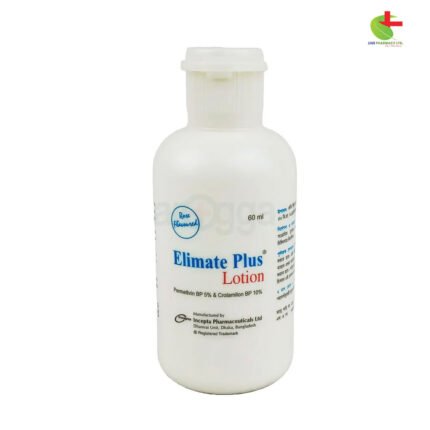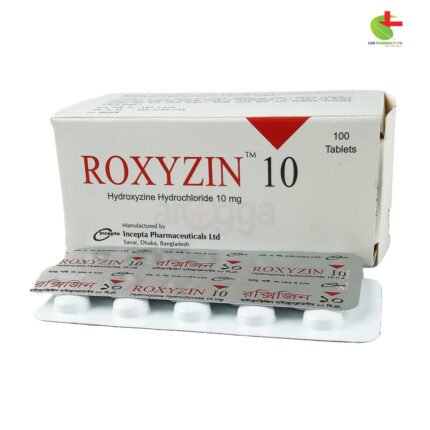Clindacin Lotion
125.00৳ Bottle (25ml)
- Clindacin lotion is indicated for the treatment of acne vulgaris and certain skin infections like erythrasma, rosacea, and folliculitis.
- Contains Clindamycin, a lincosamide antibiotic with strong antibacterial and antiacne properties.
- Applied to the affected area twice daily, noticeable results may appear within 6 weeks.
- Not for oral, ophthalmic, or intravaginal use; avoid sun exposure and use sunscreen regularly.
- Store below 25°C, away from light and moisture.
 Brand
Brand
|
Incepta Pharmaceuticals Ltd |
|---|---|
 Generics
Generics
|
Clindamycin |
 Type
Type
|
Lotion |
Indications:
Clindacin lotion is primarily indicated for the treatment of acne vulgaris. Other topical uses include:
- Treating skin infections such as erythrasma (caused by Corynebacterium minutissimum), rosacea, periorificial dermatitis, folliculitis, stasis dermatitis, chronic lymphedema, and familial pemphigus.
- Managing dermal ulcers.
Note: Use this medication only under the guidance of a registered physician.
Pharmacology:
Clindamycin, a lincosamide antibiotic, is effective against infections caused by susceptible microorganisms. As a semisynthetic derivative of lincomycin, it exhibits strong antiacne and antibacterial properties by binding to the 50s subunit of bacterial ribosomes, inhibiting early-stage protein synthesis. It is especially potent against gram-positive and anaerobic bacteria.
Microbiology:
Clindamycin is effective against:
- Aerobic gram-positive cocci: Staphylococcus aureus, Staphylococcus epidermidis (both penicillinase-producing and non-penicillinase-producing strains), Streptococci, Pneumococci.
- Anaerobic gram-negative bacilli: Bacteroides and Fusobacterium species.
- Anaerobic gram-positive non-spore forming bacilli: Propionibacterium, Eubacterium, Actinomyces species.
- Anaerobic and microaerophilic gram-positive cocci: Peptococcus, Peptostreptococcus, microaerophilic Streptococci, and Clostridium perfringens.
Dosage & Administration:
- Begin by gently washing the face or affected area with warm water or soap.
- Once the skin is fully dried (about 30 minutes later), apply a thin film of Clindamycin lotion over the affected area twice daily.
- Do not wash the applied area for at least 3 hours post-application.
Noticeable improvement may be observed after around 6 weeks, but 8 to 12 weeks may be needed for optimal benefit. Avoid contact with eyes, lips, and nose during application.
Interaction:
Clindacin can enhance the effects of other neuromuscular blocking agents, so caution is advised for patients using such agents. There is also an in vitro antagonism with erythromycin, which may have clinical significance, so concurrent use with erythromycin is not recommended.
Side Effects:
Side effects are uncommon but may include:
- Skin rash, itching, oily skin, dryness, erythema, burning, changes in skin color.
- Gastrointestinal effects, such as diarrhea, colitis, and GI disturbances.
Pregnancy & Lactation:
Adequate data for safe use in pregnancy is lacking. Animal studies suggest no adverse effects on the fetus. It is unclear if clindamycin is excreted in breast milk following topical application. Use during lactation should be approached with caution.
Precautions & Warnings:
Clindacin lotion is intended for external use only—avoid oral, ophthalmic, and intravaginal administration. Minimize exposure to sunlight and sunlamps, and wear sunscreen daily.
Overdose Effects:
While intravaginal overdose is unlikely, accidental ingestion may lead to effects similar to those of therapeutic oral doses of Clindacin.
Therapeutic Class:
Macrolides
Storage Conditions:
Store below 25°C, protected from light and moisture, and keep out of reach of children.
Note: Use as directed by a registered physician.













Reviews
There are no reviews yet.